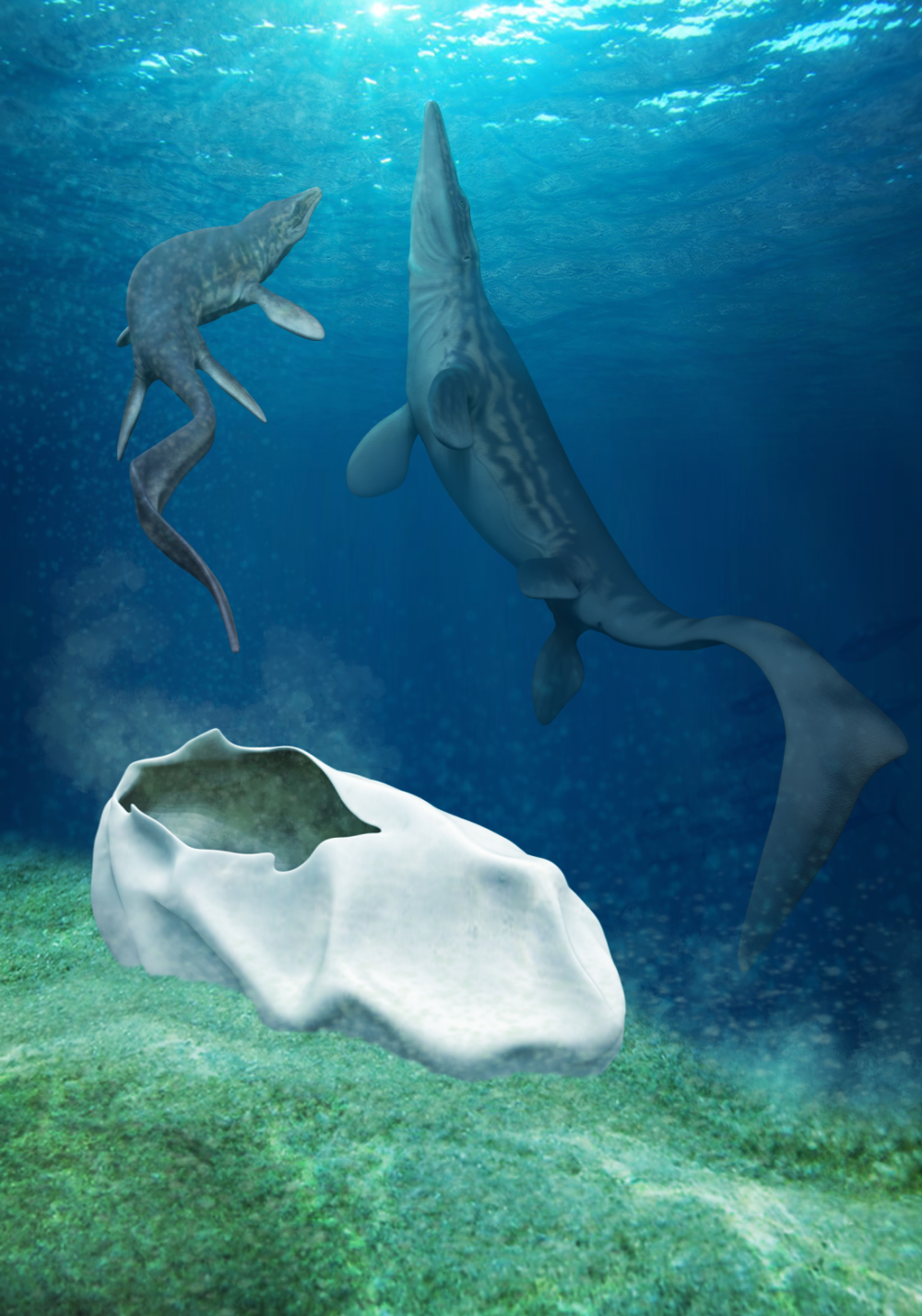When it comes to the biggest egg the world has ever seen, it’s a close fight between reptiles and birds. The elephant bird claims the top spot with an egg big enough to make the extant ostrich’s look average-sized, but “The Thing” discovered by scientists in Antarctica was a close second, and it came from a very different kind of animal.
Estimated to be around 66 million years ago, the football-sized egg of an ancient marine reptile was found in Antarctica. It became the first known fossil soft-shell egg to have been left on the continent and is thought to have been laid by a mosasaur.
“It is from an animal the size of a large dinosaur, but it is completely unlike a dinosaur egg,” said lead author Lucas Legendre, a postdoctoral researcher at the University of Texas Austin’s Jackson School of Geosciences, in a statement. “It is most similar to the eggs of lizards and snakes, but it is from a truly giant relative of these animals.”
The baby mosasaur is thought to have slipped out of its egg shortly after it was laid.
Image credit: Francisco Hueichaleo, 2020.
It was previously believed that giant marine reptiles from the Cretaceous did not lay eggs, but the mysterious leather orb would appear to contradict that. Scientists referred to the more than 28-by-18-centimeter (11-by-7-inch) stone-like fossil simply as “The Thing”.
The “visibly collapsed and folded” thin-shelled egg is among the largest to have ever been described – second only to the elephant bird’s egg – and its structure is similar to most extant lizards and snakes. That points towards whoever laid it having an ovoviviparous lifestyle whereby the egg develops inside of the mother and hatches immediately after being laid.
The same was not true for the giant elephant birds. These flightless megafaunal birds were once widespread across Madagascar, weighing 500 kilograms (1,100 pounds) and stretching 3 meters (10 feet) tall. They were so large, it’s thought one egg could feed an entire human family.
The mighty elephant bird egg is that hunk of shell on the left.
Like birds today, the elephant bird’s egg had a hard shell, unlike the soft-shell football our mosasaur left in Antarctica. As the largest eggs the planet’s ever seen, elephant bird eggs could measure 33 centimeters (13 inches) long and with a liquid capacity of 8.5 liters (2.25 US gallons). According to the Guinness Book Of World Records, that’s equivalent to seven ostrich eggs, 183 chicken eggs, or over 12,000 hummingbird eggs, making it the largest single cell known to have existed on Earth.
Both of these egg-laying behemoths are now extinct, and the title for largest egg alive today goes to the ostrich. According to Discover Wildlife, the largest egg on record came out of an ostrich in Sweden that unleashed 2.589 kilograms (5.7 pounds) of shell-laden albumen.
Boiling that would no doubt have taken a hot minute, but did you know there’s a way to tell if an egg is hard-boiled without opening it?
Source Link: 66-Million-Year-Old “The Thing” Is A Close Second For World’s Largest Egg
